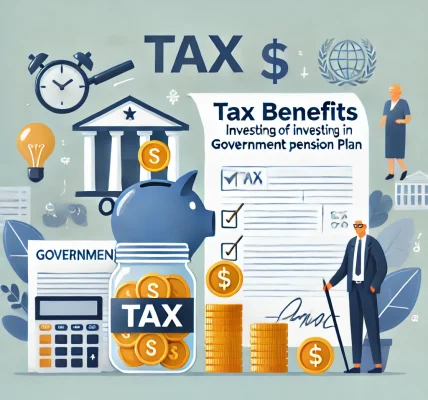Introduction
Early retirement is a dream for many, offering the freedom to pursue passions, travel, or simply enjoy a stress-free life. However, without proper financial planning, early retirement can be challenging. Government pension schemes in India play a crucial role in ensuring financial stability for individuals opting for early retirement.
In this guide, we will explore how early retirement planning works, the benefits of government pension schemes, and how they can help secure your future.
Why Plan for Early Retirement?
Retiring early has several benefits, including:
- More Personal Time: Spend quality time with family and engage in personal interests.
- Better Health & Well-being: Reduce work-related stress and focus on fitness.
- Financial Freedom: Enjoy financial independence without depending on employment income.
- Pursue New Opportunities: Start a business, travel, or engage in charitable activities.
However, early retirement requires strong financial planning to ensure sufficient funds for the post-retirement years.
Challenges of Early Retirement
- Longer Retirement Period – Early retirees need funds for a longer duration compared to those retiring at 60.
- Limited Access to Regular Pensions – Many traditional pension plans start benefits after 60 years.
- Inflation Impact – Rising costs of healthcare, lifestyle, and essentials.
- Loss of Employer Benefits – No employer-provided Provident Fund (PF) contributions or health insurance.
- Investment Risks – Higher dependence on personal savings and investments.
Solution: Government Pension Schemes
Government-backed pension schemes ensure a steady income post-retirement, helping individuals retire early without financial stress.
Best Government Pension Schemes for Early Retirement
1. National Pension System (NPS)
Best For: Salaried professionals, self-employed individuals, and private-sector employees planning early retirement.
Key Benefits:
- Flexible investment in equity, government bonds, and corporate debt.
- Withdraw up to 60% tax-free at retirement (40% must be used for an annuity plan).
- Partial withdrawal option for specific needs such as medical emergencies.
- Tax benefits up to ₹2 lakh under Sections 80C and 80CCD(1B).
- Can withdraw full funds after 25 years if retiring early.
2. Atal Pension Yojana (APY)
Best For: Low-income individuals, workers in the unorganized sector, small business owners.
Key Benefits:
- Guaranteed monthly pension of ₹1,000 to ₹5,000 after 60 years.
- Small monthly contributions starting from ₹42 ensure long-term benefits.
- Government co-contribution for eligible beneficiaries.
- Can continue investing even after early retirement to secure future income.
3. Pradhan Mantri Vaya Vandana Yojana (PMVVY)
Best For: Individuals seeking safe investments with guaranteed pension returns.
Key Benefits:
- Assured 7.4% annual return for 10 years.
- Maximum investment of ₹15 lakh per individual.
- Monthly, quarterly, or annual pension payouts.
- Backed by LIC, ensuring safe and risk-free pension income.
4. Employees’ Pension Scheme (EPS)
Best For: Salaried individuals contributing to the Employees’ Provident Fund (EPF).
Key Benefits:
- Monthly pension after 10 years of continuous service.
- Pension available at reduced rates from age 50 (for early retirees).
- Provides lifetime pension benefits to retirees and their spouses.
5. Indira Gandhi National Old Age Pension Scheme (IGNOAPS)
Best For: Individuals with low income or no savings post-retirement.
Key Benefits:
- Monthly pension of ₹200 (ages 60-79) and ₹500 (80+ years).
- Direct bank transfer ensures easy access to pension funds.
- Social security support for financially weak retirees.
How to Use Government Pension Schemes for Early Retirement?
Step 1: Assess Your Retirement Needs
- Calculate the amount required for monthly expenses post-retirement.
- Consider inflation, healthcare costs, and lifestyle choices.
- Plan savings and investments accordingly.
Step 2: Choose the Right Pension Scheme
- If you are salaried, opt for NPS or EPS.
- If you want guaranteed returns, go for PMVVY.
- If you are a self-employed individual, NPS or APY is a great choice.
Step 3: Start Early Contributions
- Invest in pension schemes as early as possible to accumulate wealth.
- The longer the investment duration, the higher the pension benefits.
Step 4: Utilize Tax Benefits
- NPS offers ₹2 lakh tax deductions (under 80C and 80CCD(1B)).
- Other pension schemes also offer tax-free pension payouts.
Step 5: Plan Partial Withdrawals for Emergencies
- NPS allows partial withdrawals for medical expenses or higher education.
- Avoid withdrawing funds unnecessarily to ensure post-retirement security.
Step 6: Diversify Investments
- Combine pension schemes with mutual funds, stocks, and fixed deposits.
- Having multiple sources of income ensures financial stability.
Example: Early Retirement Plan Using Government Pension Schemes
Case Study: Rohan’s Retirement at 50
- Age Started Investing: 30 years
- Investment Choice: NPS + PMVVY
- NPS Contribution: ₹6,000 per month (₹72,000 annually)
- PMVVY Investment at 50: ₹15 lakh
- Expected Pension from NPS at 50: ₹30,000 per month
- PMVVY Pension: ₹9,250 per month
- Total Post-Retirement Income: ₹39,250 per month
By combining NPS and PMVVY, Rohan secures his early retirement with a steady monthly pension without any financial burden.
Conclusion
Early retirement is achievable with the right planning and investment in government-backed pension schemes. By leveraging schemes like NPS, APY, EPS, and PMVVY, individuals can ensure financial independence even after retiring before 60.
To retire early without financial stress, start investing in these pension schemes today and enjoy a secure and relaxed post-retirement life!




